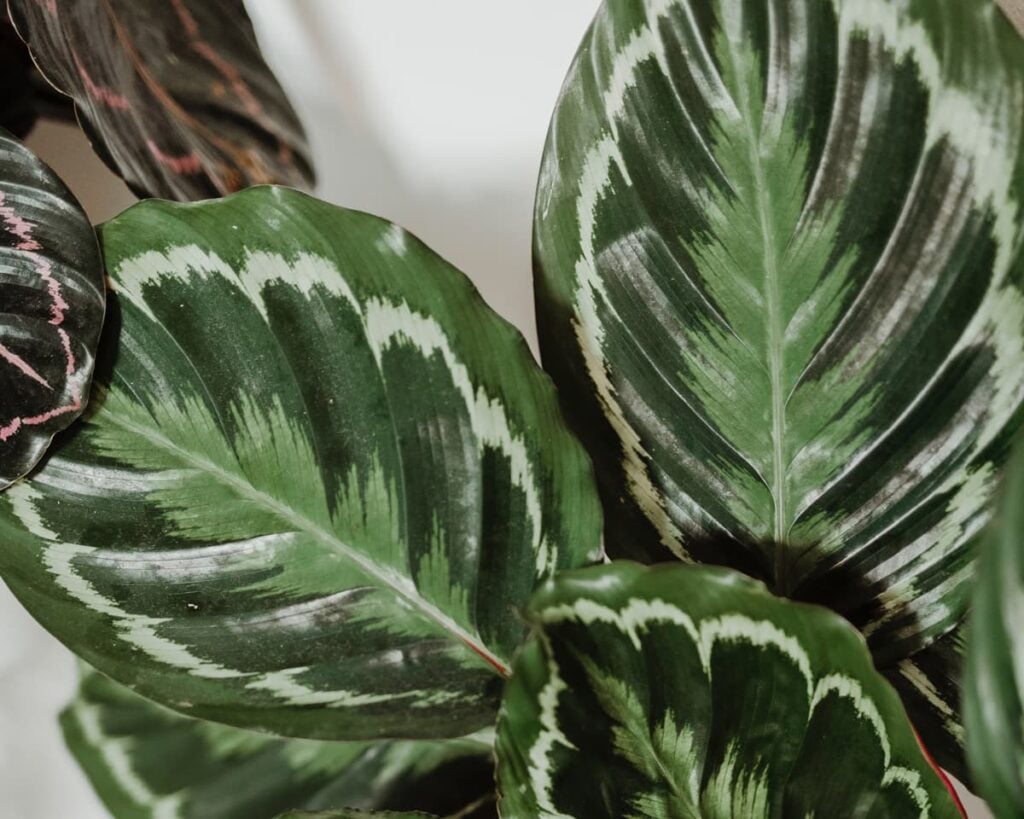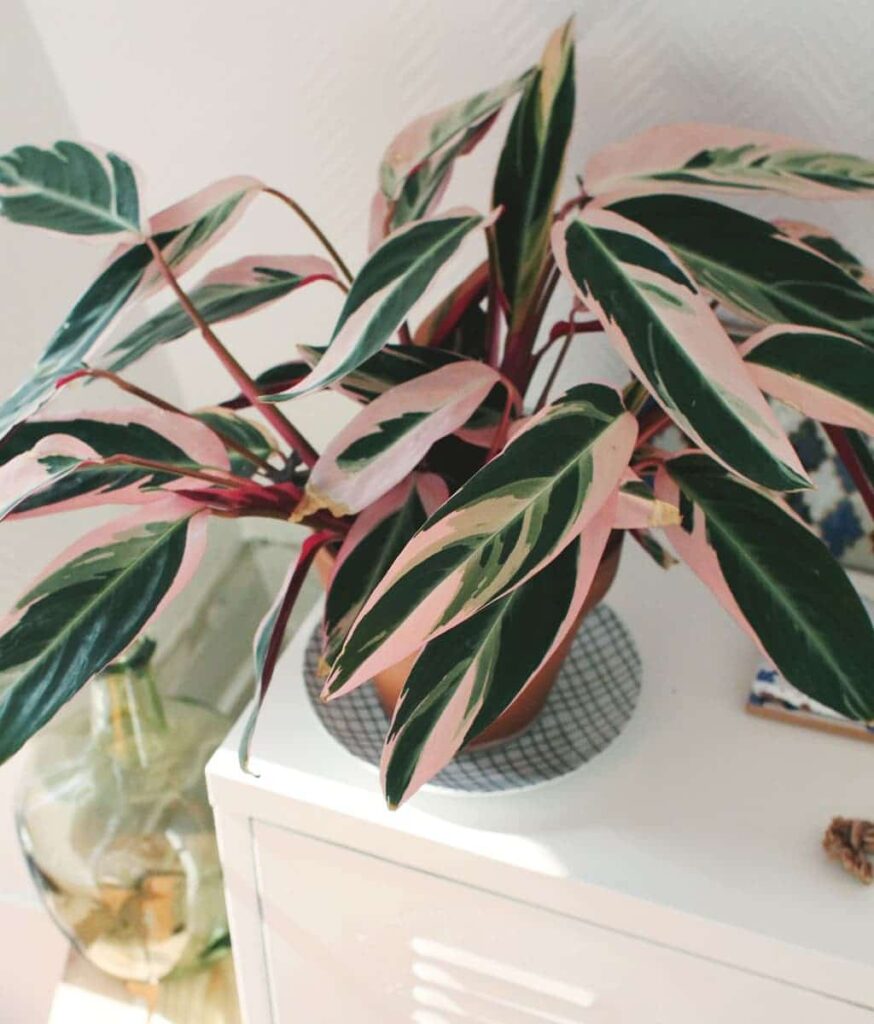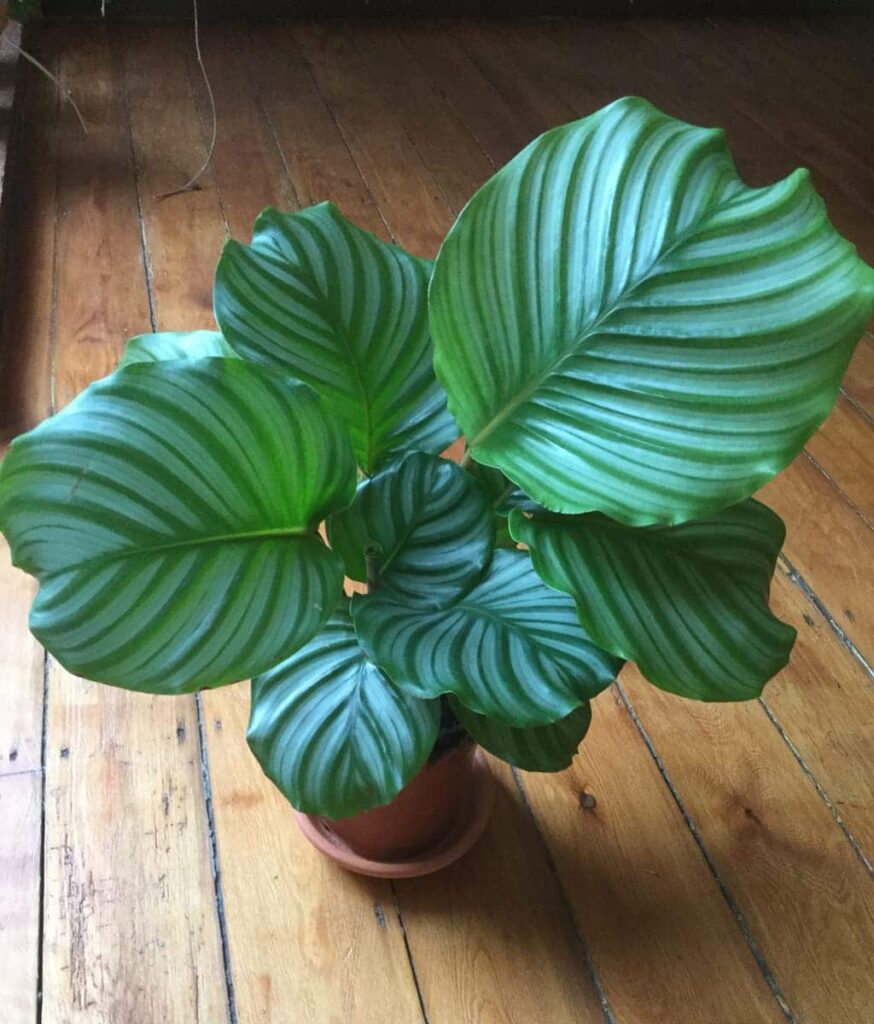Everything You Need to Know about Calathea Care

Calathea plants are known for their unique patterned foliage. It is considered to be a pet-friendly plant, making it a great plant to pick for those who share a space with curious pets. These plants are used for handicraft and food wrapping and also weaving baskets and other crafts because of the diversity of leaf shapes and designs. Check out our calathea collection.
Calathea Care
Calathea are considered to be a greenhouse plant. They grow best in warm atmosphere but cannot tolerate a cold one.
Here is the good news; calathea care is not that hard. You don’t have to call a greenhouse or glass atrium home in order to care for one of these tropical beauties. As long as you take care to mimic the balmy temps, moisture-packed air, and shady environment calathea loves, they can thrive in nearly any household. Follow these calathea care instruction below and make your plants thrive.
Light
Although Calathea is a tropical plant it prefers unfiltered, indirect sunlight or shade. Too much bright sunlight can burn the leaves of the plant and in turn the vibrant patterns may fade away. You may also notice that the leaves of calathea follows the movement of sun and so the leaves are folded upwards at night and wide open in the morning.
Soil
Moisture is one of the most important factors in the growth of Calathea. Go for the soil which can retain water. These plants prefer a slightly acidic soil. A potting mix which is airy and light-weighted is good for Calathea. Though the plants prefer moist soil but at the same time water-clogging can be a cause of root rot. So, choose a pot with well drainage.

Water
Calathea does well when watered on regular intervals and the moisture level is kept constant, i.e. not true dry and not soggy as well. Never ever let the soil dry out completely. These plants are sensitive to several minerals found in water. Prefer watering your calathea with filtered water, rainwater or let the tap water sit for overnight so that any additional minerals or chlorine can sit down.
Temperature and Humidity
Calathea thrive when kept at temperatures ranging from 21°C to 29°C and can tolerate a drop of up to 16°C but not below. Keep your plant away from cold surrounding and keep in a humid place. You can also place a humidifier.

Fertilizer
For best results, treat your calathea with liquid fertilizer once in a month at half-strength throughout the spring, summer, and fall, tapering off in winter when it naturally grows less.
Common Problems
- Symptom: Wilting, curling leaves, dry potting mix
Cause: Under watered - Symptom: Yellowing leaves, black base
Cause: Over watered - Symptom: Leaf spots
Cause: Fungal infection or mineral build up from tap water. Use distilled water and water directly into surrounding potting soil.
There are over 300 species of Calathea found on earth. They are known for their vibrant leaves and unique patterns.
Calathea are a part of ‘The Prayer Plant’ family. These are a low maintenance plantand require adequate moisture and humidity and should be kept away from direct sun to prevent the leaves from burning. The calathea is generally a pest-free plant and requires less care.
Calathea care reference: TheSpruce
